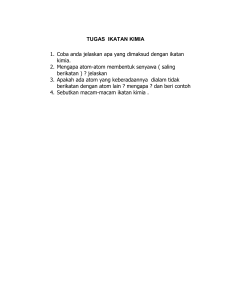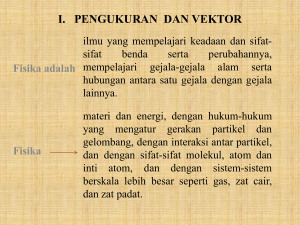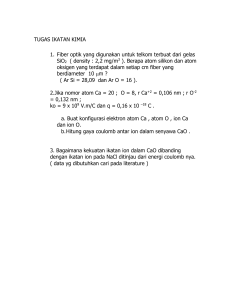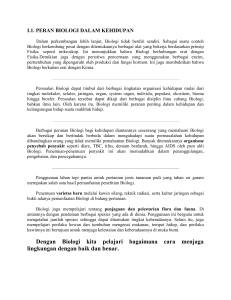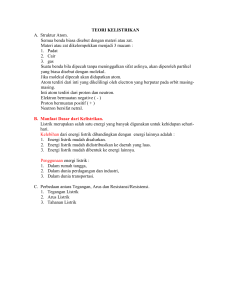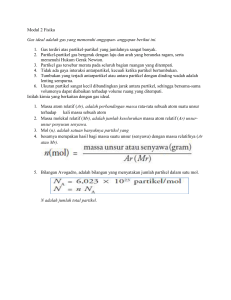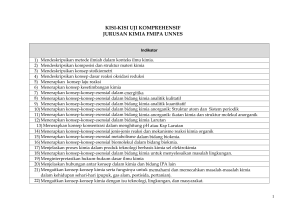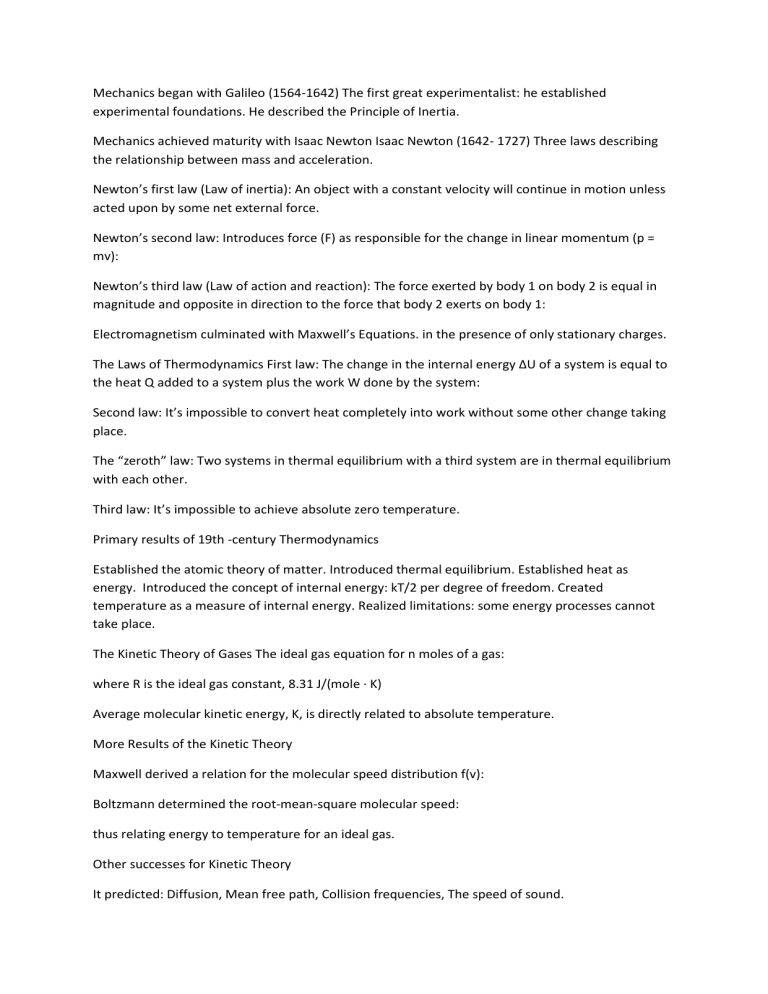
Mechanics began with Galileo (1564-1642) The first great experimentalist: he established experimental foundations. He described the Principle of Inertia. Mechanics achieved maturity with Isaac Newton Isaac Newton (1642- 1727) Three laws describing the relationship between mass and acceleration. Newton’s first law (Law of inertia): An object with a constant velocity will continue in motion unless acted upon by some net external force. Newton’s second law: Introduces force (F) as responsible for the change in linear momentum (p = mv): Newton’s third law (Law of action and reaction): The force exerted by body 1 on body 2 is equal in magnitude and opposite in direction to the force that body 2 exerts on body 1: Electromagnetism culminated with Maxwell’s Equations. in the presence of only stationary charges. The Laws of Thermodynamics First law: The change in the internal energy ΔU of a system is equal to the heat Q added to a system plus the work W done by the system: Second law: It’s impossible to convert heat completely into work without some other change taking place. The “zeroth” law: Two systems in thermal equilibrium with a third system are in thermal equilibrium with each other. Third law: It’s impossible to achieve absolute zero temperature. Primary results of 19th -century Thermodynamics Established the atomic theory of matter. Introduced thermal equilibrium. Established heat as energy. Introduced the concept of internal energy: kT/2 per degree of freedom. Created temperature as a measure of internal energy. Realized limitations: some energy processes cannot take place. The Kinetic Theory of Gases The ideal gas equation for n moles of a gas: where R is the ideal gas constant, 8.31 J/(mole · K) Average molecular kinetic energy, K, is directly related to absolute temperature. More Results of the Kinetic Theory Maxwell derived a relation for the molecular speed distribution f(v): Boltzmann determined the root-mean-square molecular speed: thus relating energy to temperature for an ideal gas. Other successes for Kinetic Theory It predicted: Diffusion, Mean free path, Collision frequencies, The speed of sound. Two ways in which energy is transported: Point mass interaction: transfers of momentum and kinetic energy: particles. Extended regions wherein energy is transferred by vibrations and rotations: waves. The Nature of Light Newton promoted the corpuscular (particle) theory. Particles of light travel in straight lines or rays, Explained sharp shadows, Explained reflection and refraction. "I procured a triangular glass prism to try therewith the celebrated phenomena of colours." (Newton, 1665) The Nature of Light Huygens promoted the wave theory. He realized that light propagates as a wave from the point of origin. He realized that light slowed down on entering dense media. He explained polarization, reflection, refraction, and double refraction. Diffraction confirmed light to be a wave. While scientists of Newton’s time thought shadows were sharp, Young’s two-slit experiment could only be explained by light behaving as a wave. Fresnel developed an accurate theory of diffraction in the early 19th century. Light waves were found to be solutions to Maxwell’s Equations. The electromagnetic spectrum is vast. All electromagnetic waves travel with a speed c, where: What exactly was waving was simply called “aether,” whose existence and properties were left for future physicists to determine. Triumph of Classical Physics: The Conservation Laws Conservation of energy: The sum of energy (in all its forms) is conserved (does not change) in all interactions. Conservation of linear momentum: In the absence of external forces, linear momentum is conserved in all interactions. Conservation of angular momentum: In the absence of external torque, angular momentum is conserved in all interactions. Conservation of charge: Electric charge is conserved in all interactions. These laws remain the key to interpreting even particle physics experiments today. The Atomic Theory of Matter Initiated by Democritus and Leucippus (~450 B.C.), who were the first to use the Greek atomos, meaning “indivisible.” Proust (1754 – 1826) proposed the Law of definite proportions (combining of chemicals always occurred with the same proportions by weight). Dalton advanced the atomic theory to explain the law of definite proportions. Avogadro proposed that all gases at the same temperature, pressure, and volume contain the same number of molecules (atoms): 6.02 × 1023 atoms. Cannizzaro (1826 – 1910) made the distinction between atoms and molecules advancing the ideas of Avogadro. Opposition to atomic theory Ernst Mach was an extreme “logical positivist,” and he opposed the theory on the basis of logical positivism, i.e., he couldn’t see atoms. Wilhelm Ostwald (1853 – 1932) supported Mach, but did so based on unexplained experimental results of radioactivity, discrete spectral lines, and the formation of molecular structures. (These are good points, but not against atomic theory, as it turned out.) Boltzmann committed suicide in 1905, and it’s said that he did so because so many people rejected his theory. Unresolved questions for atomic theory at the end of the 19th century The atomic-theory controversy raised fundamental questions. The constituents of atoms became a significant question. The structure of matter remained unknown. The atomic theory wasn’t actually universally accepted. Scanning Tunneling Microscope image of 76 individually placed iron atoms on a copper surface. This image (taken almost 100 years later) nicely proves the atomic theory! Problems in 19th -century physics In a speech to the Royal Institution in 1900, Lord Kelvin himself described two “dark clouds on the horizon” of physics: The question of the existence of an electromagnetic medium— referred to as “aether.” The failure of classical physics to explain blackbody radiation. More problems: discrete spectral lines For reasons then unknown, atomic gases emitted only certain narrow frequencies, unique to each atomic species. Absorption spectra from a cold atomic gas in front of a hot source. More problems for 19th -century physics There were observed differences in the electric and magnetic fields between stationary and moving reference systems. When applying a simple Galilean transformation, Maxwell’s Equations changed form. The kinetic theory failed to predict specific heats for real (non-ideal) gases. How did atoms form solids? Additional discoveries in 1895-7 contributed to the complications. X-rays (Roentgen), Radioactivity (Becquerel). Electron (Thomson), Zeeman effect. Overwhelming evidence for the existence of atoms didn’t arrive until the 20th century. In 1900, Max Planck advanced the atom concept to explain blackbody radiation by use of submicroscopic quanta. In 1905, Einstein used molecules to explain Brownian motion (microscopic random motion of suspended grains of pollen in water) and determined the approximate value of their size and mass. Jean Perrin (1870 – 1942) later experimentally verified Einstein’s predictions. The Beginnings of Modern Physics These new discoveries and the many resulting complications required a massive revision of fundamental physical assumptions. The introduction (~1905) of the modern theories of special relativity and quantum mechanics became the starting point of this most fascinating revision. General relativity (~1915) continued it. Quantum mechanics, Special relativity, 19th-century physics, General relativity, Speed Mekanika dimulai dengan Galileo (1564-1642). Eksperimentalis hebat pertama: ia mendirikan yayasan eksperimental. Dia menjelaskan Prinsip Inersia. Mekanika mencapai kematangan dengan Isaac Newton Isaac Newton (1642-1727) Tiga hukum yang menjelaskan hubungan antara massa dan percepatan. Hukum pertama Newton (Hukum inersia): Sebuah benda dengan kecepatan konstan akan terus bergerak kecuali jika ditindaklanjuti oleh gaya luar netto. Hukum kedua Newton: Memperkenalkan gaya (F) yang bertanggung jawab atas perubahan momentum linier (p = mv): Hukum ketiga Newton (Hukum aksi dan reaksi): Gaya yang diberikan oleh benda 1 pada benda 2 sama besarnya dan berlawanan dalam arah ke gaya yang diberikan benda 2 pada benda 1: Elektromagnetisme memuncak dengan Persamaan Maxwell. di hadapan hanya muatan stasioner. Hukum Termodinamika Hukum pertama: Perubahan energi dalam ΔU sistem sama dengan kalor Q yang ditambahkan ke sistem ditambah kerja W yang dilakukan oleh sistem: Hukum kedua: Tidak mungkin mengubah panas sepenuhnya menjadi kerja tanpa yang lain perubahan terjadi. Hukum "nol": Dua sistem dalam kesetimbangan termal dengan sistem ketiga berada dalam kesetimbangan termal satu sama lain. Hukum ketiga: Tidak mungkin mencapai suhu nol mutlak. Hasil utama Termodinamika abad ke-19 Mendirikan teori atom materi. Memperkenalkan kesetimbangan termal. Membentuk panas sebagai energi. Memperkenalkan konsep energi internal: kT / 2 per derajat kebebasan. Menciptakan suhu sebagai ukuran energi internal. Keterbatasan yang disadari: beberapa proses energi tidak dapat berlangsung. Teori Kinetik Gas Persamaan gas ideal untuk n mol gas: dengan R adalah konstanta gas ideal, 8,31 J / (mol · K) Energi kinetik molekul rata-rata, K, berhubungan langsung dengan suhu absolut. Hasil Lainnya dari Teori Kinetik Maxwell memperoleh hubungan untuk distribusi kecepatan molekul f (v): Boltzmann menentukan kecepatan molekul root-mean-square: sehingga menghubungkan energi dengan suhu untuk gas ideal. Keberhasilan lain untuk Teori Kinetik Ini memprediksikan: Difusi, Jalur bebas rata-rata, Frekuensi tabrakan, Kecepatan suara. Dua cara di mana energi diangkut: Interaksi massa titik: transfer momentum dan energi kinetik: partikel. Wilayah yang diperluas di mana energi ditransfer oleh getaran dan rotasi: gelombang. Sifat Cahaya Newton mempromosikan teori sel (partikel). Partikel perjalanan cahaya dalam garis lurus atau sinar, Penjelasan bayangan tajam, Penjelasan refleksi dan refraksi. "Saya membeli prisma kaca berbentuk segitiga untuk dicoba bersama fenomena warna yang terkenal." (Newton, 1665) Sifat Cahaya Huygens mempromosikan teori gelombang. Dia menyadari bahwa cahaya merambat sebagai gelombang dari titik asal. Dia menyadari bahwa cahaya melambat saat memasuki media yang padat. Ia menjelaskan polarisasi, refleksi, refraksi, dan refraksi ganda. Difraksi memastikan cahaya menjadi gelombang. Sementara para ilmuwan pada zaman Newton menganggap bayangan itu tajam, eksperimen dua celah Young hanya dapat dijelaskan dengan cahaya yang berperilaku sebagai gelombang. Fresnel mengembangkan teori difraksi yang akurat pada awal abad ke19. Gelombang cahaya ditemukan sebagai solusi untuk Persamaan Maxwell. Spektrum elektromagnetik sangat luas. Semua gelombang elektromagnetik bergerak dengan kecepatan c, di mana: Apa yang sebenarnya melambai hanya disebut "aether", yang keberadaan dan sifatnya ditinggalkan untuk ditentukan oleh fisikawan masa depan. Kemenangan Fisika Klasik: Hukum Kekekalan Kekekalan energi: Jumlah energi (dalam segala bentuknya) dikekalkan (tidak berubah) dalam semua interaksi. Kekekalan momentum linier: Dengan tidak adanya gaya eksternal, momentum linier dipertahankan di semua interaksi. Kekekalan momentum sudut: Dengan tidak adanya torsi eksternal, momentum sudut dipertahankan di semua interaksi. Kekekalan muatan: Muatan listrik disimpan dalam semua interaksi. Hukum ini tetap menjadi kunci untuk menafsirkan bahkan eksperimen fisika partikel hari ini. Teori Atom tentang Materi yang Diprakarsai oleh Democritus dan Leucippus (~ 450 SM), yang pertama kali menggunakan atomos Yunani, yang berarti "tak terpisahkan." Proust (1754 - 1826) mengusulkan hukum proporsi pasti (penggabungan bahan kimia selalu terjadi dengan proporsi berat yang sama). Dalton mengembangkan teori atom untuk menjelaskan hukum proporsi pasti. Avogadro mengusulkan bahwa semua gas pada suhu, tekanan, dan volume yang sama mengandung jumlah molekul (atom) yang sama: 6,02 × 10 atom. Cannizzaro (1826 - 1910) membuat perbedaan antara atom dan molekul dengan mengembangkan gagasan Avogadro. 23 Oposisi terhadap teori atom Ernst Mach adalah seorang "positivis logis" yang ekstrim, dan dia menentang teori tersebut berdasarkan positivisme logis, yaitu, dia tidak dapat melihat atom. Wilhelm Ostwald (1853 1932) mendukung Mach, tetapi melakukannya berdasarkan hasil eksperimen radioaktivitas yang tidak dapat dijelaskan, garis spektrum diskrit, dan pembentukan struktur molekul. (Ini adalah poin yang bagus, tetapi tidak bertentangan dengan teori atom, ternyata.) Boltzmann bunuh diri pada tahun 1905, dan dikatakan bahwa dia melakukannya karena begitu banyak orang menolak teorinya. Pertanyaan yang belum terselesaikan untuk teori atom pada akhir abad ke-19 Kontroversi teori atom menimbulkan pertanyaan mendasar. Konstituen atom menjadi pertanyaan penting. Struktur materi tetap tidak diketahui. Teori atom sebenarnya tidak diterima secara universal. Gambar Scanning Tunneling Microscope dari 76 atom besi yang ditempatkan secara individual pada permukaan tembaga. Gambar ini (diambil hampir 100 tahun kemudian) dengan baik membuktikan teori atom! Masalah dalam fisika abad ke-19 Dalam pidatonya di Royal Institution pada tahun 1900, Lord Kelvin sendiri menggambarkan dua "awan gelap di cakrawala" fisika: Pertanyaan tentang keberadaan media elektromagnetik — disebut sebagai "aether." Kegagalan fisika klasik untuk menjelaskan radiasi benda hitam. Masalah lainnya: garis spektral diskrit Untuk alasan yang belum diketahui, gas atom hanya memancarkan frekuensi sempit tertentu, unik untuk setiap spesies atom. Spektrum serapan dari gas atom dingin di depan sumber panas. Masalah lain untuk fisika abad ke-19 Ada perbedaan yang diamati dalam medan listrik dan magnet antara sistem referensi diam dan bergerak. Saat menerapkan transformasi Galilea sederhana, Persamaan Maxwell berubah bentuk. Teori kinetik gagal memprediksi kalor spesifik untuk gas nyata (non-ideal). Bagaimana atom membentuk padatan? Penemuan tambahan pada tahun 1895-7 berkontribusi pada komplikasi tersebut. Sinar-X (Roentgen), Radioaktivitas (Becquerel). Elektron (Thomson), efek Zeeman. Bukti yang melimpah tentang keberadaan atom tidak sampai pada abad ke-20. Pada tahun 1900, Max Planck memajukan konsep atom untuk menjelaskan radiasi benda hitam dengan menggunakan kuanta submikroskopis. Pada tahun 1905, Einstein menggunakan molekul untuk menjelaskan gerakan Brown (gerakan acak mikroskopis dari butiran serbuk sari dalam air) dan menentukan nilai perkiraan ukuran dan massanya. Jean Perrin (1870 - 1942) kemudian memverifikasi prediksi Einstein secara eksperimental. Permulaan Fisika Modern Penemuan-penemuan baru ini dan banyak komplikasi yang diakibatkannya memerlukan revisi besar-besaran terhadap asumsi fisik fundamental. Pengenalan (~ 1905) teori modern relativitas khusus dan mekanika kuantum menjadi titik awal dari revisi yang paling menarik ini. Relativitas umum (~ 1915) melanjutkannya. Mekanika kuantum, Relativitas khusus, Fisika abad ke-19, Relativitas umum, Kecepatan
